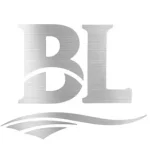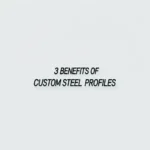Determining the exact price of a stainless steel angle, such as a 100x100x10 mm size, is complex because it depends on numerous fluctuating factors. It’s impossible to provide a single, fixed price. Instead, understanding the variables that influence the cost is essential.


The primary factors affecting the price of a 100x100x10 angle include:
- Stainless Steel Grade: This is often the most significant factor. Common grades like 304/304L are generally less expensive than grades with higher alloy content like 316/316L (which contains molybdenum for enhanced corrosion resistance). Specialized grades will cost more.
- Market Conditions: Prices of raw materials, especially nickel, chromium, and molybdenum, fluctuate based on global supply and demand. These fluctuations directly impact stainless steel pricing.
- Supplier and Location: Different suppliers have varying overhead costs, stock levels, and pricing strategies. Geographic location affects transportation costs.
- Order Quantity: Larger orders typically benefit from lower unit prices (price per meter or per piece) due to economies of scale in production and handling.
- Length and Tolerances: Standard lengths might be priced differently than custom-cut lengths. Requirements for tighter dimensional tolerances can also increase the cost.
- Finish: The standard mill finish (hot-rolled, annealed, pickled – HRAP) is the baseline. Additional processing like polishing or brushing adds to the cost.
- Value-Added Services: Any cutting, drilling, or special testing requested will increase the final price.
To illustrate the potential variation, consider the following hypothetical price ranges (these are estimates only and subject to significant change):
| Stainless Steel Grade | Size (mm) | Hypothetical Price Range (per Meter, Mill Finish) | Key Factor |
|---|---|---|---|
| 304 / 304L | 100 x 100 x 10 | €XX – €YY / $XX – $YY | Standard grade, generally lower cost |
| 316 / 316L | 100 x 100 x 10 | €ZZ – €WW / $ZZ – $WW (Typically 20-40% higher than 304) | Higher alloy content (Mo), higher cost |
Disclaimer: The price ranges above are purely illustrative examples and do not represent actual market quotes. Prices change frequently.
The best way to get an accurate price for a 100x100x10 stainless steel angle is to contact reputable suppliers directly. Provide them with the required grade, quantity, length, finish, relevant ASTM specifications, and delivery location to receive a precise quote based on current market conditions.
What is the price of 100x100x10 angle? — This article provides a practical buyer‑focused overview with specifications, selection tips, and on‑site considerations. Explore related topics: blog.
Key Specifications and Standards
- Standards: ASTM / EN / JIS (e.g., ASTM A240/A36, EN 10088/10025, JIS G4304/G3131).
- Surface options: 2B, BA, No.4, HL, mirror; galvanized (electro / hot‑dip).
- Processing: hot‑rolled, cold‑rolled, annealed & pickled, welded or seamless.
- Typical services: slitting, shearing, cut‑to‑length, drilling, beveling, deburring.
- Documentation: MTC, CO, packing list with net/gross weight and heat numbers.
Typical Applications
Construction, machinery, automotive, energy, enclosures and fencing, food equipment (for stainless), and general fabrication. Match grade and finish to corrosion, strength, and appearance requirements.
Selection Guide
- Use certified material with Mill Test Certificate (MTC).
- Confirm standards (ASTM/EN/JIS) and tolerances per drawing.
- Match surface finish to application (2B/BA/No.4/galvanized).
- Specify dimensions and acceptable deviation upfront.
- Plan packaging and corrosion protection for transit.
Processing, Packaging and Logistics
We adopt edge protection, waterproof wrapping, rust‑inhibiting paper, fumigated pallets, and strapping suitable for sea freight. Loading photos and weight lists are provided for each shipment.
FAQs
Q: What lead time can I expect?
A: Typically 7–15 days ex‑works for standard sizes; custom processing may extend the schedule.
Q: Can you provide cut‑to‑size service?
A: Yes. We slit, shear, cut, drill, bevel and deburr to drawing to reduce waste and speed installation.
Q: How do you ensure quality?
A: Incoming inspection, process control, and final inspection with traceable heat numbers; third‑party inspection is available.
Q: Do you support small trial orders?
A: We support pilot quantities with consolidated shipping to control cost.
All values are typical and for guidance only; confirm with the datasheet and purchase order before production.
Related products: view details.
Related products: view details.





